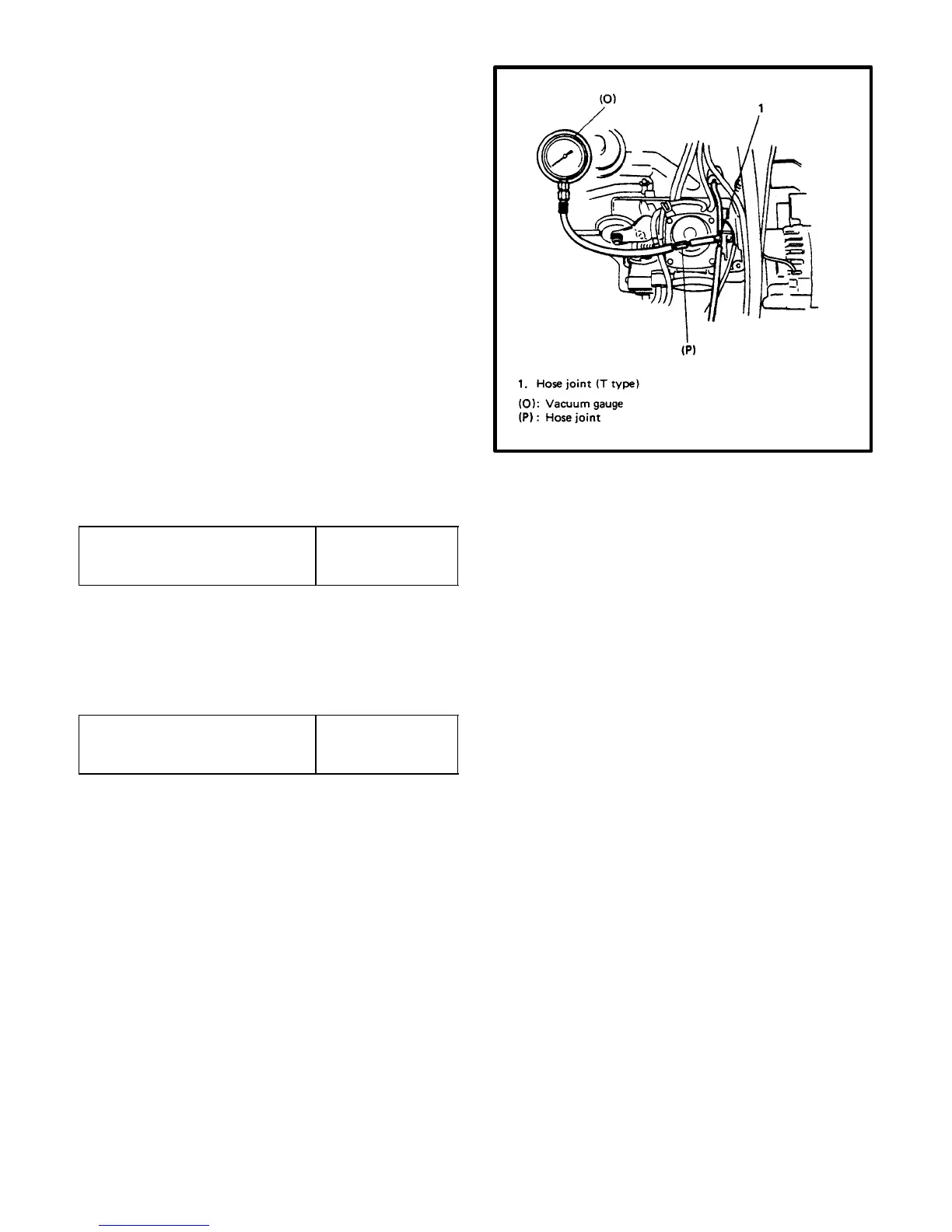90
NOTE:
Prior to checking oil pressure, check the following.
Oil level in oil pan.
If level is low, add oil to Full level line on oil
dip stick.
Oil quality.
If oil is discolored, or deteriorated, change
oil. For particular oil to be used , refer to
table in SECTION 1.
Oil leak.
If oil leak is found, repair it.
1) Disconnect lead wire from oil pressure switch.
2) Remove oil pressure switch from cylinder block.
3) Install oil pressure gauge (special tool) in vacated
threaded hole.
4) Start engine and warm it up to normal operating tem-
perature.
5) After warming up, raise engine speed to 4,000 RPM
and measure oil pressure.
Oil pressure specification
2.7–3.7 kg/cm2
38.4–52.6 psi
at 4,000 RPM
6) After checking oil pressure, stop engine and remove
oil pressure gauge.
7) Before reinstalling oil pressure switch, be sure to wrap
its screw threads with sealing tape and tighten switch to
specified torque.
Tightening torque for oil
pressure switch
12–15 N–m
1.2–1.5 kg–m
9.0–10.5 lb–ft
NOTE:
If sealing tape edge is bulged out from screw
threads of switch, cut off edge.
8) After installing oil pressure switch, start engine and
check switch for oil leakage.
Vacuum Measurement
Engine vacuum that develops in intake line is a good indi-
cator of engine condition. Vacuum checking procedure
is as follows:
1) Warm up engine to normal operating temperature.
2) Install vacuum gauge (O) to pressure sensor hose, as
shown in figure below. Install engine tachometer.
3) Run engine at specified idling speed and under this
running condition, read vacuum gauge. Vacuum should
be between 40cmHg (15.8 in.Hg) and 48 cmHg (18.8
in.Hg).
A low vacuum reading means that any combination of the
following malconditions is the cause, which must be cor-
rected before releasing machine to customer.
a) Leaky cylinder head gasket
b) Leaky intake manifold gasket
c) Leaky valves
d) Weakend valve springs
e) Maladjusted valve clearance
f) Valve timing out of adjustment
